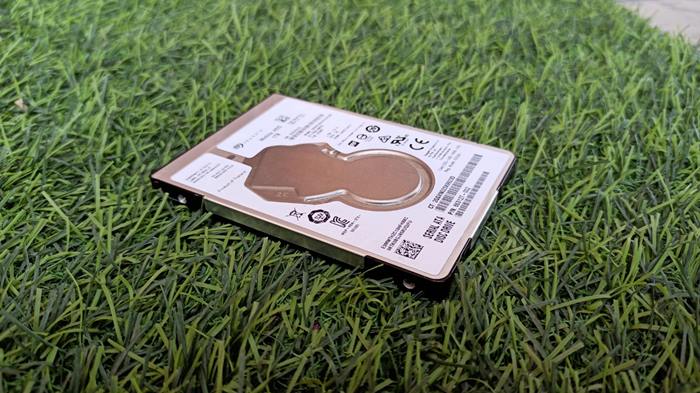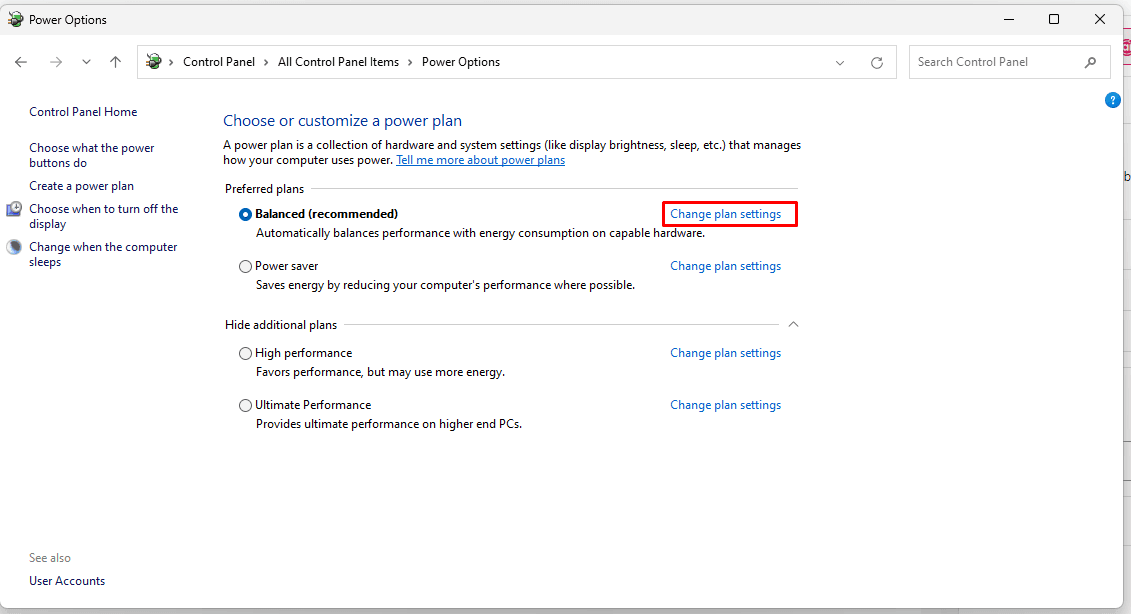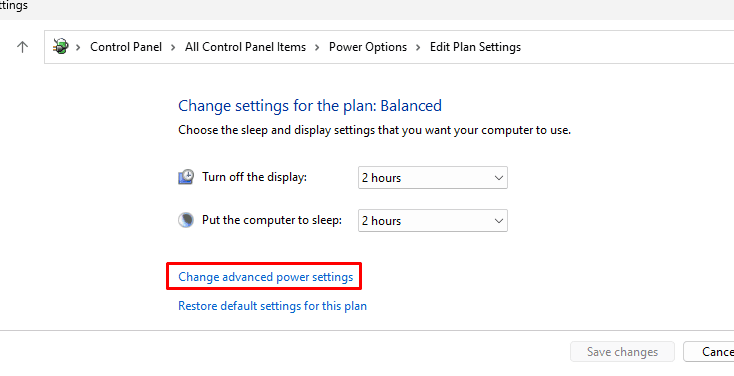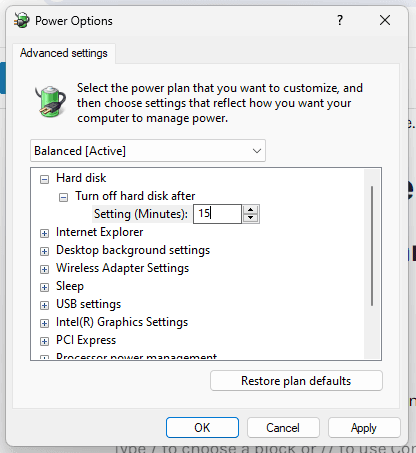You can divide the power consumption of a hard drive into three circumstances: Startup Power, Idle Power, and Operating Power. In other words, there will never be a single power number when we talk about the HDD power consumption. This is because, in physics, power is the total amount of electric energy transferred, converted, and dissipated in a circuit or component at a given point in time. So, even when the drive is looking idle, there is some power consumption, and it varies over time.
Now, how much power a hard drive consumes depends heavily on the storage capacity of the drive. Then, the second factor is the speed of the drive. Then comes the technology used and many more things.
The power numbers given by the hard drive manufacturers are to estimate the total energy consumption in a period. Keep in mind that they are not constant numbers; however, good for calculations and estimations. Checking these numbers is pretty easy. You can just visit the official page of your hard drive and have a look at the datasheet.
A 7200 RPM hard drive would normally consume 20-25W for 5-10 seconds during startup. It will then idle at around 6-8 watts. The average power consumption during read/write tasks will be around 8-12 watts, and the maximum can go up to 16 watts. In sleep or standby mode, it will consume 0.6-1.8 watts.
A 5400 RPM hard drive can consume 15-20W for 5-10 seconds during startup. It will then idle at around 4-6 watts. The average power consumption during read/write tasks will be around 6-9 watts, and the maximum can go up to 12 watts. In sleep or standby mode, you can expect near around 0.5-1.5 watts.
As the RPM increases (can be up to 10K RPM), these numbers will increase and as you go down in terms of RPM, the numbers will decrease.
Note: The numbers are taken from different studies some of which are mentioned at the end of this article.

HDD Power Consumption
Hard Drive Power Consumption
Here’s an improved and expanded version of the table with additional details and context:
| Drive Type | Read/Write Power (W) | Idle Power (W) | Standby Power (W) | Notes |
|---|---|---|---|---|
| HDD (2.5″ SATA) | 1.5 – 3.0 | 0.5 – 1.2 | 0.1 – 0.3 | Typical laptop-sized drives |
| HDD (3.5″ SATA) | 6 – 12 | 4 – 8 | 0.5 – 2.0 | Common desktop drives, higher capacity |
| HDD (Enterprise) | 7 – 15 | 5 – 10 | 0.5 – 2.5 | Designed for 24/7 operation, higher performance |
| SSD (SATA-3) | 1 – 5 | 0.2 – 0.8 | 0.05 – 0.2 | Lower power than HDDs, higher for writes |
| SSD (NVMe Gen 5.0) | 5 – 12 | 0.2 – 0.8 | 0.05 – 0.2 | Higher power during intensive workloads |
As usual, these are not concrete numbers because you’ll get to know there are many things that affects the power consumption of a hard drive in the below section. Also, as we discussed earlier, RPM is the most important element contributing to the total power consumption. So, here is a table to help you understand the power consumption impacts due to the HDD RPM.
| Common RPMs | Read/Write Power (W) | Idle Power (W) | Standby Power (W) |
|---|---|---|---|
| 5400 RPM HDD | 6 – 9 | 4 – 6 | 0.5 – 1.5 |
| 7200 RPM HDD | 8 – 12 | 6 – 8 | 0.6 – 1.8 |
| 10,000+ RPM HDD | 10 – 16 | 8 – 12 | 1.0 – 2.5 |
Some Conclusions:
- Higher rotational speeds require more power for both idle and active states.
- SSDs consume less power compared to the hard drives.
- 7200 RPM drives provide a good balance between performance to power consumption.
Hard Drive Power Consumption Calculator
Let’s calculate how much power a hard drive or multiple hard drives under different workloads can consume and how much would it cost you. Also, this tool compares it with the SSD power consumption.
🖥️ HDD Power Calculator
Factors Affecting Power Consumption of Hard Drives
As we discussed earlier, there are many things that affects the power consumption of hard drives. Let’s talk about them.
1. Rotational Speed
The spindle motor is the most power-hungry component in a hard drive. In fact, it can use around 80% of the total power consumed by the hard drive during heavy workloads.
| RPM (Revolutions per Minute) | Power Consumption (Watts) |
|---|---|
| 5,400 | 4.5 – 7.5 |
| 7,200 | 6.5 – 9.5 |
| 10,000 | 8.0 – 12.0 |
| 15,000 | 10.0 – 15.0 |
2. Drive Capacity/Size
More storage capacity in hard drives requires more surface area of the magnetic platters. So, instead of increasing the size of the platters, manufacturers utilize multiple platters. This increases the load on the spindle motor, and we have to use multiple read/write heads. There is some extra load on the circuitry but not very significant.
3. Form Factor
There are two types of Hard Drive form factors available in the market: 3.5-inch and 2.5-inch. The 3.5-inch hard drive consumes more power because of the bigger spindle motor size, higher RPM (generally), higher storage capacities, and cooling requirements.
4. Interface Type
The storage interface determines how fast the data can move. The fastest interface for hard drives is SATA-3, maxing out at 600 MB/s read/write speed. The older interfaces, such as SATA-2, 1, and ATA were slower and inefficient. SATA also has power management features that allow the drives to enter a lower power state when not in use.
5. Activity Level
Obviously, when you are reading or writing data, the power consumption will be higher. When the drive is idle, the power consumption can even go below 1 watt.
6. Temperature
Higher temperature means more resistance in the circuits and hence more power ris equired to do the same job.
Popular Hard Drives And Their Power Consumption

Why Does Hard Drive Power Consumption Matter?
Hard Drive power consumption isn’t as massive as CPU and GPU power consumption. These are comparatively power-efficient devices as there are no huge processes and calculations going on. It is just a storage device for our computers. But, there are some reasons the hard drive power consumption may matter to you. These are Battery life (Laptops), Heat Generation (more power means more heat), noise and vibrations, and environmental impacts.
These may sound like generic terms but when you combine multiple drives, especially on enterprise levels, the numbers and impacts will become huge.
Hard Drives vs SSD Power Consumption
| SSD Type | Idle Power | Active Power | Peak Power |
|---|---|---|---|
| 2.5″ SATA | 2 W | 7.5-8 W | 10 W |
| mSATA | 1-2 W | <5 W | 7 W |
| M.2 SATA | 1-2 W | 3.5-5 W | 8 W |
| M.2 NVMe Gen 5.0 | 2-3 W | 8-10 W | 15 W |
| PCIe U.2 | 4 W | 10-17 W | 20 W |
SSDs generally consume more power during read/write operations, but that doesn’t mean SSDs are inefficient. For the same read/write operations with the same size, any SSD will take less time compared to a hard drive.
So, because we are looking at the overall power utilized for any task, SSDs are more inefficient. However, you can see the SSD consuming more power for the same task at a single point in time.
How to Optimize Hard Drive Power Consumption?
1. Utilizing Power Management Settings
For Windows:
- Go to Control Panel > Power Options.

- Choose a power plan and click on “Change plan settings”.

- Click on “Change advanced power settings”.

- Expand the “Hard disk” option and set “Turn off hard disk after” to the desired time. Usually, setting it to 15 minutes of inactivity is good.

For macOS:
- Go to System Preferences > Energy Saver.
- Adjust the “Turn display off after” and “Put hard disks to sleep when possible” sliders.
For Linux:
- Install
hdparmif not already installed. - Run
sudo hdparm -S 240 /dev/sdX, where “240” is the idle time in seconds before the disk goes to sleep and “/dev/sdX” is your hard drive. (Note: The default value of 240 equals 20 minutes. Adjust as necessary.)
Do Hard Drives consume more power than SSDs?
During heavy read/write operations, SSDs consume more power than hard drives because their speed is high. But, when we look at the overall energy utilized for any task to happen, the total generally becomes similar. Most of the time, SSDs prove to be more efficient because those peaks in performance and power consumption are there for short time periods.
On the other hand, hard drives might use less power even when doing read/write operations, but those tasks will take more than double or triple the time to complete (in the case of SATA SSD only).
So, it’s true that there are spikes in SSD power consumption, but that doesn’t mean SSDs are inefficient; it’s just that they need more power to do high-speed operations.
What makes SSDs consume a lot of power (up to 20 Watts in Gen 5.0 SSDs) is their design. The power is stored in the form of an electric charge in the floating gate transistors. When the data write speed is higher, more charge has to be transferred. Even when the data is read from these transistors, the voltage is applied to the control gate to form a channel and check the state of the transistor. All this requires a huge amount of current because there are millions and billions of cells.
This isn’t the case with the hard drive because there is no direct electricity involved in data storage. Electricity is used indirectly to rotate the motor and manage comparatively small circuitry.
Resources:
An Analysis of Hard Drive Energy Consumption
Modeling Hard Drive Power Consumption
Accurate and Low-Overhead Process-level Energy Estimation for Modern Hard Disk Drives
